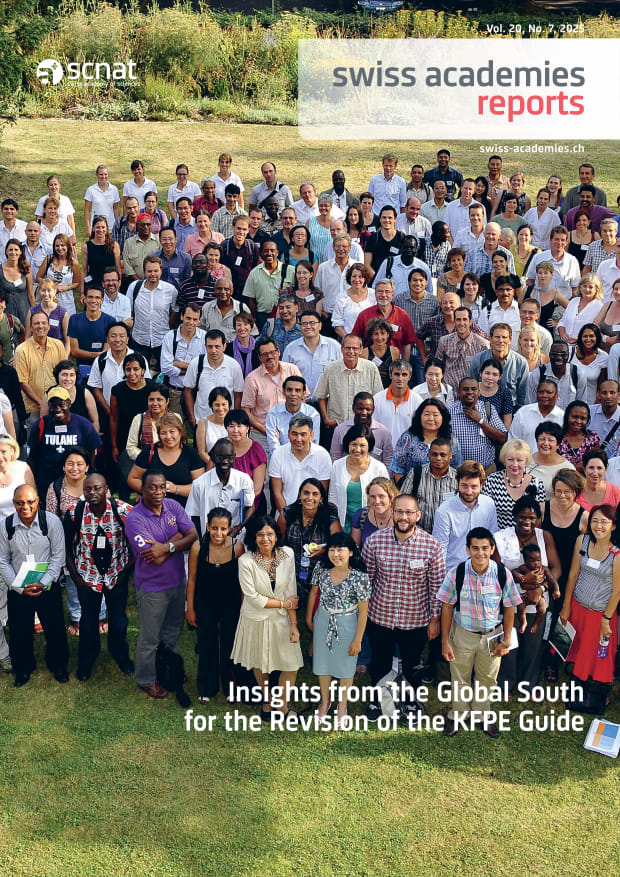Swiss Academies Series
Jeune Académie Suisse JAS
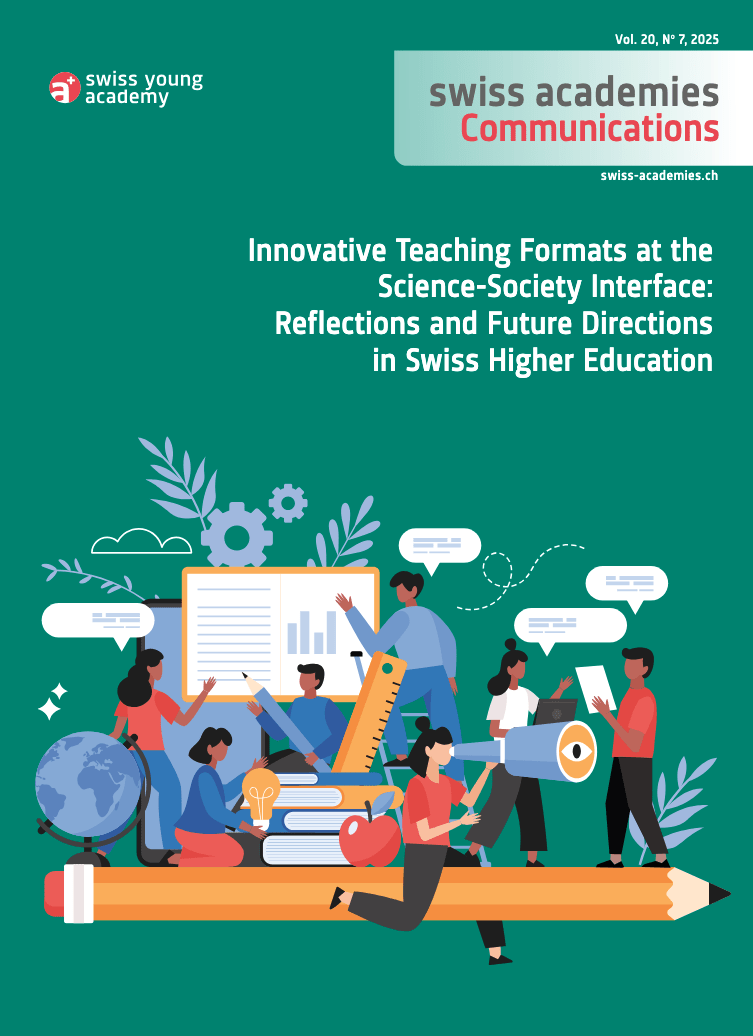
Innovative Teaching Formats at the Science-Society Interface: Reflections and Future Directions in Swiss Higher Education
Science-society dialogue is crucial for addressing pressing societal challenges. One important avenue for strengthening this link, in an inter- and transdisciplinary perspective, is teaching formats that encourage students to engage in the public sphere. However, an illustrative collection of best practices in Swiss higher education has been lacking so far. This practice-driven report draws on a non-exhaustive stocktake of existing courses in Switzerland and participatory workshops among lecturers. It features illustrative examples from Swiss higher education institutions and introduces a new typology of science-society teaching formats, offering educators a structured way to design and analyze courses across six dimensions. In addition, the publication discusses both the opportunities and challenges of implementing such teaching formats. To further advance science-society education, the report identifies three priority areas for action.
Académies suisses des sciences a+

Stockage saisonnier de l’énergie : un aperçu
Qu’est-ce que le stockage saisonnier d’énergie ? Comment fonctionne-t-il et la Suisse en a-t-elle vraiment besoin ?
La présente synthèse aborde le sujet sous différents angles. Elle apporte aux décideurs actifs dans la politique, l’économie et l’administration ainsi qu’au public intéressé une vue d’ensemble claire, structurée et étendue. L’objectif est de présenter les interactions technologiques et institutionnelles de manière aisément compréhensible, de situer le rôle du stockage saisonnier dans le système énergétique suisse et d’identifier les principaux facteurs susceptibles d’influencer les besoins en stockage. Des options d’action et des orientations stratégiques sont également esquissées, lesquelles ouvrent la voie à un système énergétique résilient répondant aux variations des besoins saisonniers.
Académie suisse des sciences naturelles SCNAT
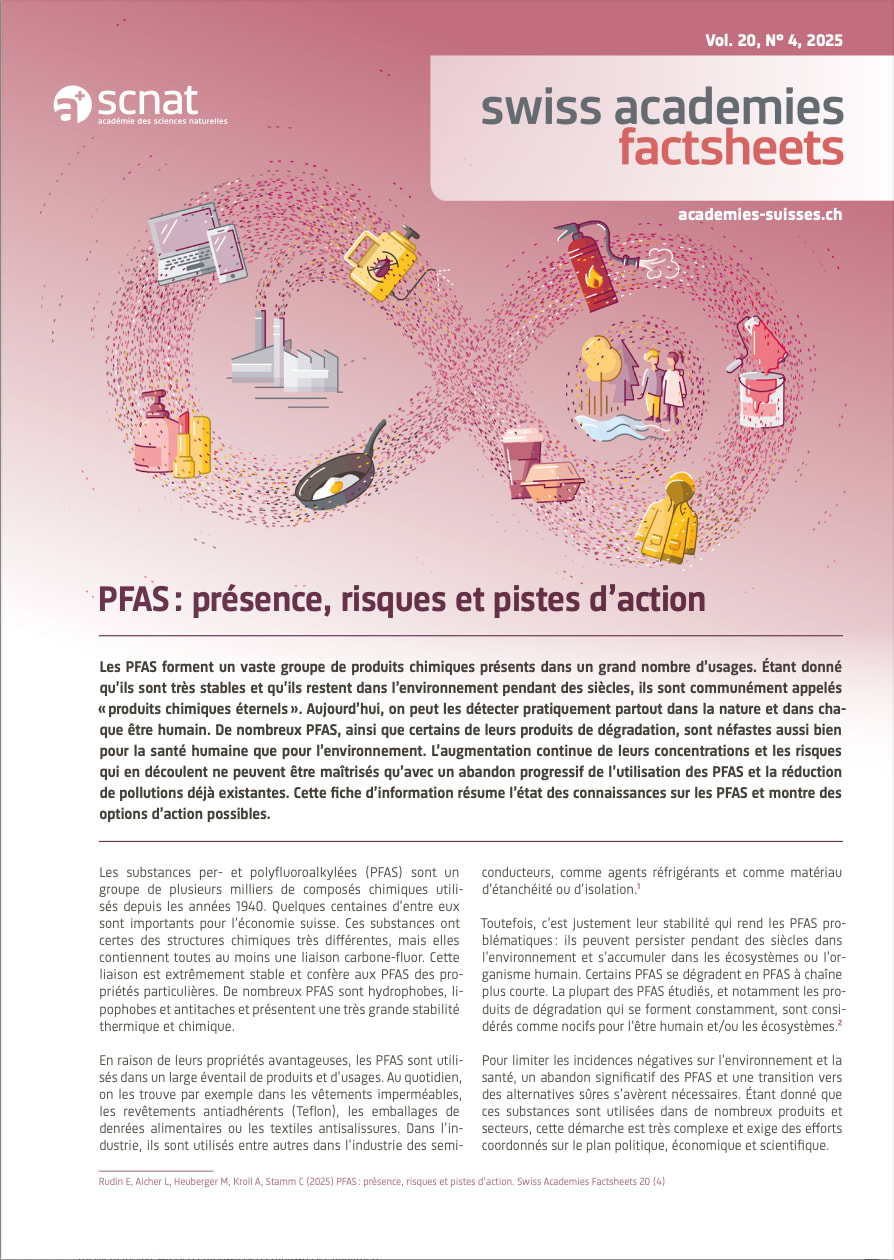
PFAS : présence, risques et pistes d’action
Les PFAS forment un vaste groupe de produits chimiques présents dans un grand nombre d’usages. Étant donné qu’ils sont très stables et qu’ils restent dans l’environnement pendant des siècles, ils sont communément appelés « produits chimiques éternels ». Aujourd’hui, on peut les détecter pratiquement partout dans la nature et dans chaque être humain. De nombreux PFAS, ainsi que certains de leurs produits de dégradation, sont néfastes aussi bien pour la santé humaine que pour l’environnement. L’augmentation continue de leurs concentrations et les risques qui en découlent ne peuvent être maîtrisés qu’avec un abandon progressif de l’utilisation des PFAS et la réduction de pollutions déjà existantes. Cette fiche d’information résume l’état des connaissances sur les PFAS et montre des options d’action possibles.
Swiss Platform Ageing Society

Promouvoir la participation des seniors : une check-list pour bien démarrer
Les personnes âgées s’engagent de multiples façons au sein des organisations : accompagnement, soutien logistique, projets collectifs, coordination ou encore présidence. En mettant leur temps, leurs compétences et leur énergie au service d’activités porteuses de sens, elles apportent une contribution essentielle au bon fonctionnement de nombreuses structures.
Mais comment favoriser concrètement leur participation ? À quoi faut-il être attentif ?
Ce factsheet propose une check-list en dix points essentiels pour guider les institutions, communes et associations dans leurs démarches.Académies suisses des sciences a+
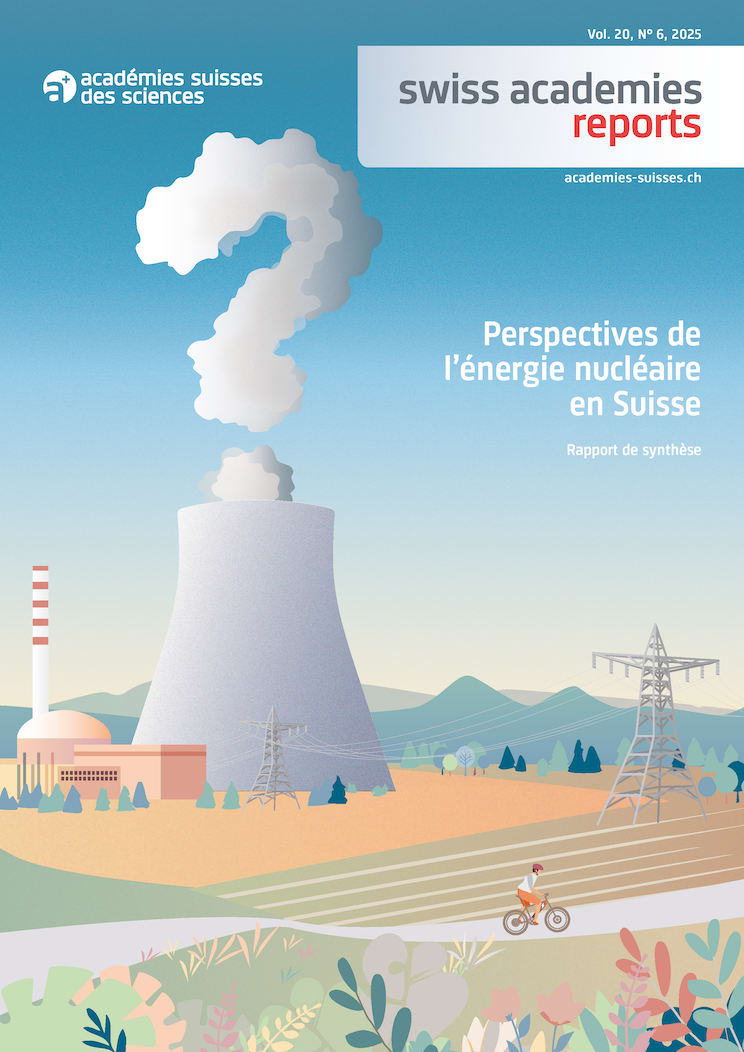
Perspectives de l’énergie nucléaire en Suisse - Rapport de synthèse
Neu U, Markard J, Betz R, Boulouchos K, Pautz A, Stadelmann I (2025)
Perspectives de l’énergie nucléaire en Suisse. Rapport de synthèse.
Swiss Academies Reports 20 (6)
Académies suisses des sciences a+
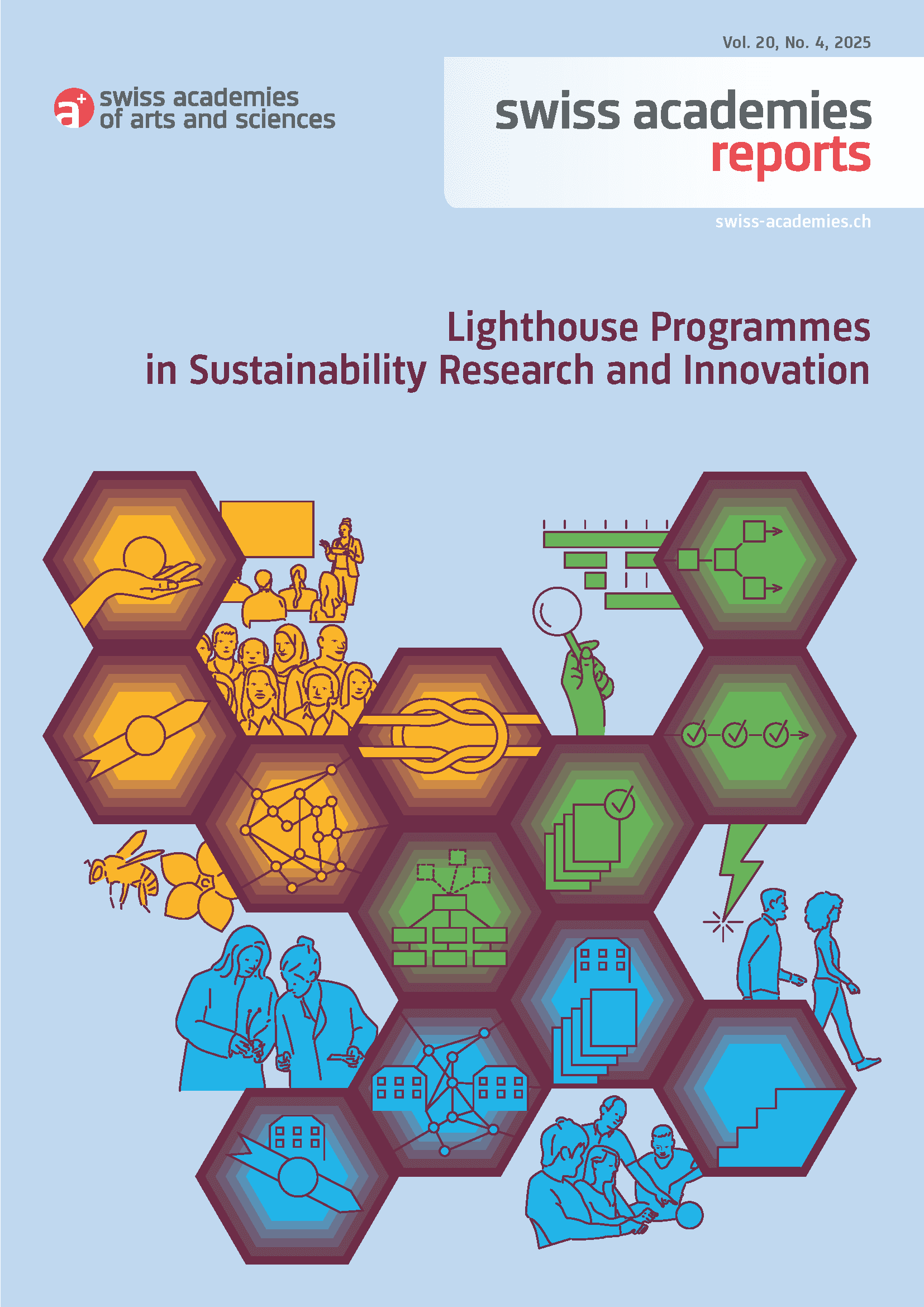
Lighthouse Programmes in Sustainability Research and Innovation
Wuelser G, Edwards P (2025)
Lighthouse Programmes in Sustainability Research and Innovation
Swiss Academies Reports 20 (4)Académies suisses des sciences a+

Directives éthiques pour l’expérimentation animale
La loi suisse sur la protection des animaux autorise l’utilisation d’animaux à des fins scientifiques précises, mais en même temps exige le respect de la dignité et la préservation de leur bien-être. Répondre à ces deux intérêts sociétaux contradictoires peut représenter un devoir exigeant pour les chercheurs.euses. Les Directives éthiques pour l’expérimentation animale (2025) doivent leur permettre d’objectiver la marge d’appréciation existante et les inciter à prendre conscience de leur manière de traiter les animaux dans le cadre de leur recherche, et à y réfléchir. La mise à jour de la version précédente des directives datant de 2005 a été motivée d’une part par de nouvelles connaissances scientifiques ainsi que de nouvelles méthodes de recherche, et d’autre part par des modifications du cadre légal.

